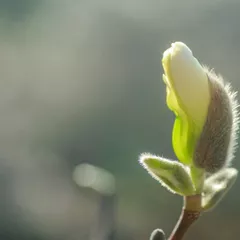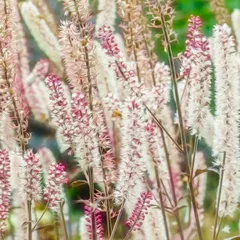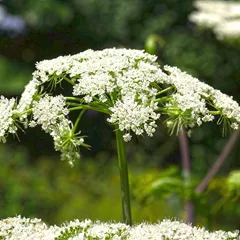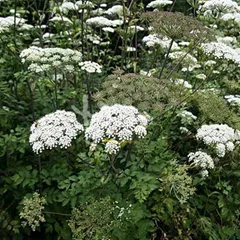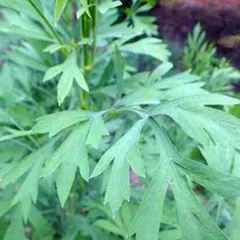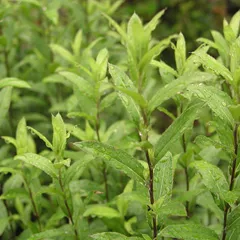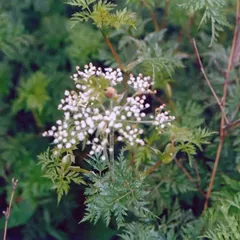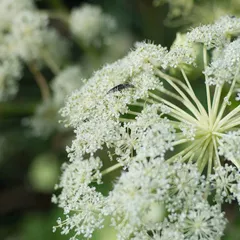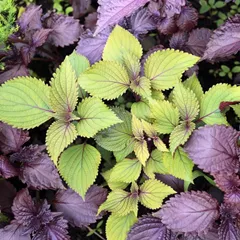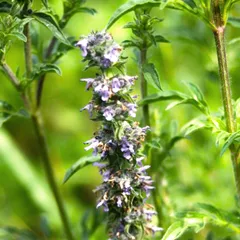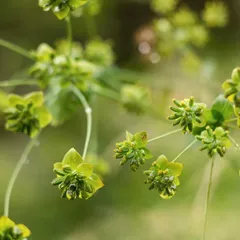Qiang Huo Sheng Shi Tang
Qiang Huo Sheng Shi Tang
Chinese: 羌活胜湿汤
Pinyin: Qiāng Huó Shèng Shī Tāng
Other names: Notopterygium Decoction to Overcome Dampness
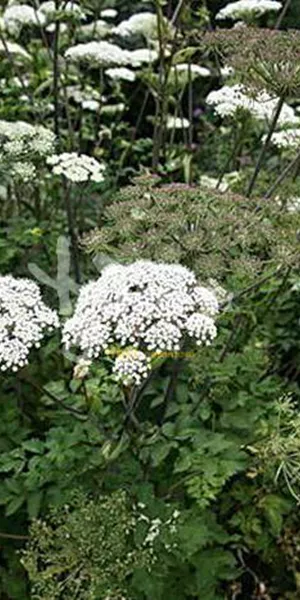
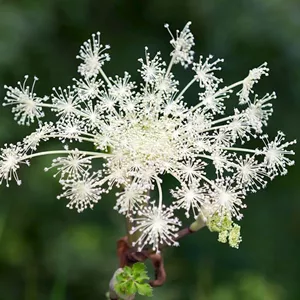
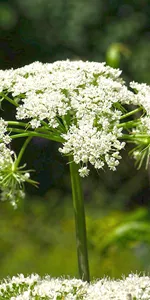
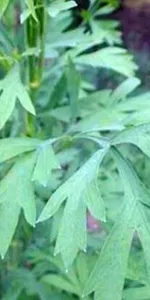
Qiang Huo Sheng Shi Tang
Qiang Huo Sheng Shi Tang
Chinese: 羌活胜湿汤
Pinyin: Qiāng Huó Shèng Shī Tāng
Other names: Notopterygium Decoction to Overcome Dampness
Number of ingredients: 7 herbs
Formula category: Formulas that dispel Wind-Damp
Conditions for which it may be prescribed: Rheumatic feverTension headacheUpper respiratory tract infections
Main actions: Expels wind and dampness
Contraindications: Contraindicated for patients with Yin Deficiency or excessive Heat.
Source date: 1247 AD
Source book: Clarifying Doubts about Damage from Internal and External Causes
The information provided here is not a replacement for a doctor. You shouldn't use it for the purpose of self-diagnosing or self-medicating but rather so you can have a more informed discussion with a professional TCM practitioner.
Qiang Huo Sheng Shi Tang is a 7-ingredient Chinese Medicine formula with Notopterygium Roots (Qiang Huo) and Pubescent Angelica Roots (Du Huo) as principal ingredients.
Invented in 1247 AD, it belongs to the category of formulas that dispel Wind-Damp. Its main action is that it expels wind and dampness.
In Chinese Medicine health conditions are thought to arise due to "disharmonies" in the body as a system. These disharmonies are called "patterns" and the very purpose of herbal formulas is to fight them in order to restore the body's harmony.
In this case Qiang Huo Sheng Shi Tang is used by TCM practitioners to fight patterns like Damp-Wind. From a Western Medicine standpoint, such patterns can give rise to a range of conditions such as rheumatic fever, upper respiratory tract infections or tension headache for instance.
On this page, after a detailed description of each of the seven ingredients in Qiang Huo Sheng Shi Tang, we review the patterns and conditions that Qiang Huo Sheng Shi Tang helps treat.
The seven ingredients in Qiang Huo Sheng Shi Tang
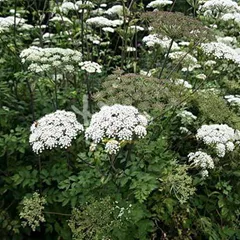
Qiang Huo is a king ingredient in Qiang Huo Sheng Shi Tang. Like the name indicates, it means it has more power than other ingredients in the formula.
1. Notopterygium Roots (Qiang Huo)
Qiang Huo expels Wind Damp from the upper reaches of the Greater Yang Channel. The combination of the two key herbs are very effective in treating general Wind Damp patterns.
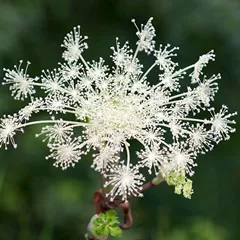
Du Huo is a king ingredient in Qiang Huo Sheng Shi Tang. Like the name indicates, it means it has more power than other ingredients in the formula.
2. Pubescent Angelica Roots (Du Huo)
Part used: Dried root
Nature: Warm
Meridian affinity: BladderKidney
Category: Herbs that dispel Wind and Dampness
Du Huo expels Wind Damp from the lower reaches of the Greater Yang Channel. The combination of the two key herbs are very effective in treating general Wind Damp patterns.
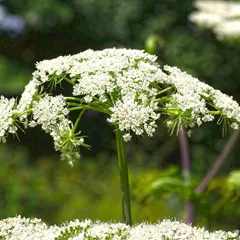
Gao Ben is a deputy ingredient in Qiang Huo Sheng Shi Tang. This means it helps the king ingredient(s) treat the main pattern or it serves to treat a coexisting pattern.
3. Chinese Lovage Roots (Gao Ben)
Gao Ben expel Wind Damp from the Exterior aspects of the Greater Yang Channel. It also assist one of the key herbs Notopterygium root in treating headache.
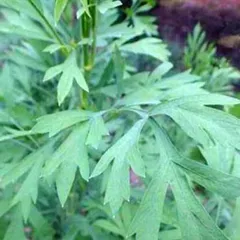
Fang Feng is a deputy ingredient in Qiang Huo Sheng Shi Tang. This means it helps the king ingredient(s) treat the main pattern or it serves to treat a coexisting pattern.
4. Saposhnikovia Roots (Fang Feng)
Fang Feng expel Wind Damp from the Exterior aspects of the Greater Yang Channel. It also assist one of the key herbs Notopterygium root in treating headache.
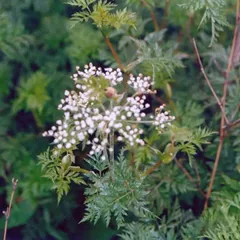
Chuan Xiong is an assistant ingredient in Qiang Huo Sheng Shi Tang. This means that it either serves to reinforces the effect of other ingredients or it moderates their toxicity.
5. Szechuan Lovage Roots (Chuan Xiong)
Part used: Dried rhizome
Nature: Warm
Taste(s): Pungent
Meridian affinity: GallbladderLiverPericardium
Category: Herbs that invigorate the Blood
In general Chuan Xiong's main actions are as follows: "Regulates and moves the Blood. Relieves Wind-Cold and pain. Circulates the Qi in the Upper Burner, relieving headaches."
In the context of Qiang Huo Sheng Shi Tang, it is used because it invigorates the Blood so as to relieve headache as well as feeling of heaviness and pain. .
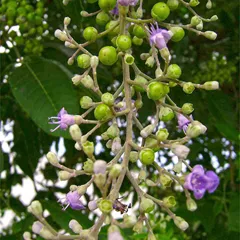
Man Jing Zi is an assistant ingredient in Qiang Huo Sheng Shi Tang. This means that it either serves to reinforces the effect of other ingredients or it moderates their toxicity.
6. Vitex Fruits (Man Jing Zi)
In general Man Jing Zi's main actions are as follows: "Relieves the Exterior, scatters Wind and clears Heat. Clears Wind-Heat associated with the Liver. Clears Wind-Damp painful obstruction."
In the context of Qiang Huo Sheng Shi Tang, it is used because it treats the headache.
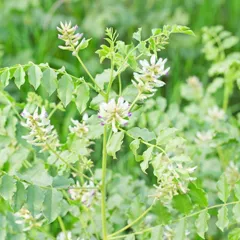
Gan Cao is an envoy ingredient in Qiang Huo Sheng Shi Tang. This means that it directs the formula towards certain area of the body and/or harmonizes the actions of other ingredients.
7. Liquorice (Gan Cao)
Part used: Dried root and rhizome
Nature: Neutral
Taste(s): Sweet
Meridian affinity: HeartLungSpleenStomach
Category: Tonic herbs for Qi Deficiency
In general Gan Cao's main actions are as follows: "Tonifies the Basal Qi and nourishes the Spleen Qi. Clears Heat and dispels toxicity. Moistens the Lungsexpel phlegm and stop coughing. Relieves spasms and alleviates pain. Harmonizes and moderates the effects of other herbs."
In the context of Qiang Huo Sheng Shi Tang, it is used because it harmonizes the actions of the other herbs of the formula.
Qiang Huo Sheng Shi Tang is used to treat Damp-Wind
It's important to remember that herbal formulas are meant to treat patterns, not "diseases" as understood in Western Medicine. According to Chinese Medicine patterns, which are disruptions to the body as a system, are the underlying root cause for diseases and conditions.
As such Qiang Huo Sheng Shi Tang is mostly used to treat the pattern "Damp-Wind" which we describe below.
But before we delve into Damp-Wind here is an overview of the Western conditions it is commonly associated with:
Rheumatic fever Upper respiratory tract infections Tension headache
Again it wouldn't be correct to say "Qiang Huo Sheng Shi Tang treats rheumatic fever" for instance. Rather, Qiang Huo Sheng Shi Tang is used to treat Damp-Wind, which is sometimes the root cause behind rheumatic fever.
Now let's look at Damp-Wind, a pattern that TCM practitioners commonly treat with Qiang Huo Sheng Shi Tang.
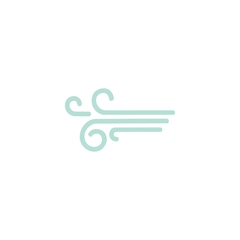
Wind is one of the pathogenic factors in Chinese Medicine. Learn more about Wind in Chinese Medicine
Damp-Wind
Pulse type(s): Slippery (Hua), Floating (Fu)
Symptoms: Fever Nausea Sweating Body aches Muscle ache Swollen joints Aversion to cold Swollen neck glands Occipital stiffness Feeling of heaviness
Qiang Huo Sheng Shi Tang is sometimes prescribed by TCM practitioners to treat Damp-Wind. This pattern leads to symptoms such as aversion to cold, fever, swollen neck glands and nausea. Patients with Damp-Wind typically exhibit slippery (Hua) or floating (Fu) pulses.
This pattern indicates the early stage of Exterior Wind and Dampness invasion. When there is Dampness obstructing the Connecting channels, it gives rise to swollen glands in the neck. When it obstructs the joints, it leads to pain there. It can also cause muscle ache and feeling of heaviness if the... read more about Damp-Wind
Formulas similar to Qiang Huo Sheng Shi Tang
Xin Yi San is 56% similar to Qiang Huo Sheng Shi Tang
Jiu Wei Qiang Huo Tang is 44% similar to Qiang Huo Sheng Shi Tang
Chuan Xiong Cha Tiao San is 44% similar to Qiang Huo Sheng Shi Tang
Jia Wei Xiang Su San is 40% similar to Qiang Huo Sheng Shi Tang
Shi Wei Bai Du San is 40% similar to Qiang Huo Sheng Shi Tang
Jing Fang Bai Du San is 38% similar to Qiang Huo Sheng Shi Tang

